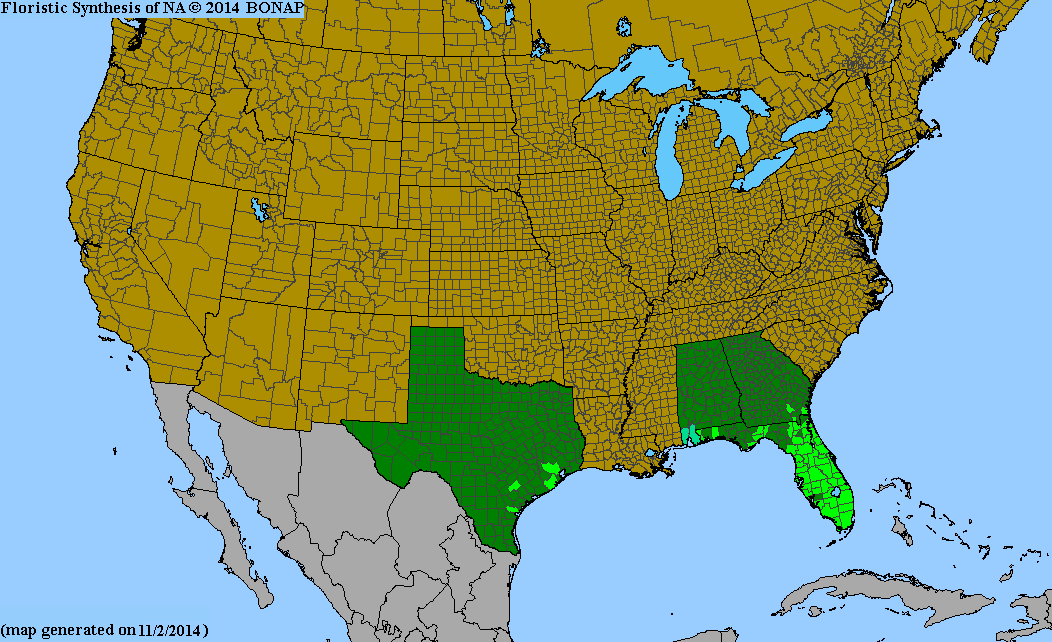Texas Wildbuds
Desmodium incanum
(Creeping Beggarweed)
| Scientific Name | Desmodium incanum (Desmodium canum) | USDA PLANTS Symbol | DEIN3 |
| Common Name | Creeping Beggarweed, Tickclover | ITIS Taxonomic Serial No. | 25804 |
| Family | Fabaceae (Pea) | SEINet Reference |
Click Here |
| Description | Habitat: Various soils in open areas along roadsides, waste areas, pastures and grasslands; often considered a weed. Plant: Spreading to erect perennial, stems up to 10 feet long, developing from a large taproot; many branched runners that can root at stem nodes; stems are green, becoming reddish with age and have short, fuzzy hairs. Leaves: Compound trifoliate leaves with three leaflets of variable shape but mostly elliptic with acute tips and rounded bases; the center (terminal) leaflet is 1.6 to 3.5 inches long and the lateral leaflets 1.3 to 2.4 inches long; upper surface is somewhat hairy and shiny; edges and lower surfaces have fuzzy hairs Inflorescence: Long, spread-out terminal racemes of very small pink pea-like flowers; each blossom 1/8 to 1/4-inch long with vertical banner notched at top and red and yellow spots at base; short, hairy pedicels less than 3/8-inch long; calyx with fuzzy hairs and pointed lobes. Bloom Period: October. References: "Wildflowers of Texas" by Michael Eason, iNaturalist and Weed Alert; D. canum in "Manual of the Vascular Plants of Texas" by Correll and Johnston. |
BONAP Distribution Map Map Color Key Map Color Key |
Texas Status: Introduced |
Banner photo of Castilleja indivisa and Lupinus ssp. taken along FM 1323 north of Johnson City, Blanco County
© Tom Lebsack 2025
Every attempt is made to provide accurate, up-to-date, and relevant information, but the completeness or accuracy of any information presented on this website cannot be guaranteed. I use authoritative references to insure high standards of accuracy and review and update the information frequently.






